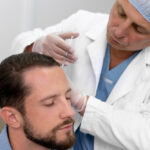Hair thinning and excessive shedding have become increasingly common concerns across all age groups, often leading to stress, insecurity, and a search for effective solutions. While many products and treatments claim to restore volume and thickness, few deliver results that align with the natural biology of the body. Among modern approaches, hair prp treatment has emerged as a highly regarded option because it uses the body’s own regenerative power to stimulate hair follicles, leading to natural-looking results and renewed confidence.
Understanding the Science Behind Regenerative Hair Therapy
The foundation of this treatment lies in platelet-rich plasma (PRP), a component of blood rich in growth factors and proteins. When injected into specific areas of the scalp, PRP encourages dormant hair follicles to enter an active growth phase, increasing both density and quality of hair strands. Unlike chemical-based solutions, this method is autologous—meaning it comes from the patient’s own blood—minimizing risks of allergic reactions or complications.
What makes this therapy fascinating is the way it bridges modern science with the body’s natural ability to heal itself. By concentrating the body’s healing elements and reintroducing them into targeted areas, the process stimulates cellular repair, enhances circulation, and improves follicular health over time. Many patients describe it as the body’s way of helping itself, with a medical boost.
Why People Are Turning Toward This Approach
One of the most significant reasons for its growing popularity is that it offers an alternative to surgical hair restoration. Not everyone is ready for invasive procedures or hair transplants, and not everyone responds well to topical medications. This treatment provides a minimally invasive, low-risk, and natural option that fits into a wide spectrum of lifestyles.
Patients report benefits such as:
-
Noticeable reduction in hair shedding within a few months
-
Improved thickness and strength of existing strands
-
A gradual but natural appearance of new growth
-
Minimal downtime and virtually no scarring
Beyond the physical improvements, the emotional impact is equally valuable. Regaining control over hair health often helps people restore self-image, boost confidence, and feel more positive in social or professional situations. For many, this is about more than hair—it’s about identity and well-being.
What to Expect During the Process
The procedure usually begins with a blood draw, similar to a routine medical test. The blood sample is then placed in a centrifuge to separate platelet-rich plasma from other components. Once prepared, the concentrated plasma is injected into targeted areas of the scalp using fine needles.
The treatment typically lasts between 30 to 60 minutes and requires little to no downtime. Some mild tenderness or redness may appear immediately afterward, but most individuals can return to their normal activities the same day. A series of sessions—often spaced four to six weeks apart—is generally recommended to achieve noticeable and lasting results.
Over time, patients can expect a gradual improvement in hair thickness, scalp coverage, and overall texture. Results vary depending on factors such as age, genetic predisposition, and severity of hair loss, but many people see visible changes within three to six months.
Long-Term Benefits and Considerations
Consistency is key for achieving and maintaining results. While the initial series of sessions lays the foundation, follow-up treatments are often recommended every six to twelve months to sustain growth and follicle vitality. Compared to daily topical applications or systemic medications, many individuals find this approach easier to maintain, as it requires fewer ongoing commitments.
Another important aspect is its compatibility with other treatments. Many specialists recommend combining PRP with lifestyle changes, nutritional support, or laser therapy to maximize outcomes. Since the treatment is derived from the patient’s own biology, it integrates seamlessly into broader hair care strategies without introducing harmful chemicals.
It’s also worth noting that expectations should remain realistic. This therapy works best for individuals with thinning hair rather than complete baldness. It may not replace hair where follicles are entirely absent, but it can significantly strengthen existing strands and prolong the life cycle of active follicles.
Restoring Confidence Through Natural Growth
Hair loss affects not only appearance but also emotional health. People often feel older, less vibrant, or less attractive when their hair begins to thin. A regenerative approach offers more than cosmetic improvement—it helps individuals reconnect with their self-image.
The true value of this therapy lies in its holistic benefits. By harnessing the body’s own healing properties, it restores more than hair—it restores confidence, peace of mind, and a sense of control. Unlike quick fixes or artificial solutions, it aligns with the body’s natural rhythms, ensuring results that look and feel authentic.
Final Thoughts
The journey to addressing hair loss is deeply personal, and each individual must decide what feels right for them. However, regenerative therapies like PRP provide an option that balances science, safety, and natural growth. As research continues and techniques evolve, this approach stands out as one of the most promising and sustainable ways to combat thinning hair.
By focusing not just on appearance but also on confidence and self-esteem, this treatment represents more than a medical procedure—it represents a step toward reclaiming identity and embracing natural vitality.




